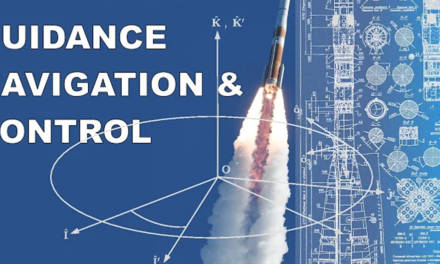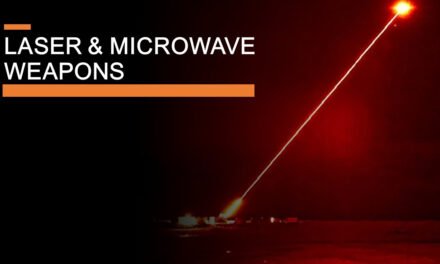Robotics and artificial intelligence (AI) play a pivotal role in managing space exploration missions by enhancing efficiency, enabling autonomous operations, and expanding the scope of what can be achieved in the harsh and unpredictable environment of space. They work synergistically to support a variety of activities, from spacecraft navigation to data analysis, ensuring mission success and reducing human risk.
Roles of Robotics in Space Exploration
1. Planetary Exploration
- Rovers: Robots like NASA’s Perseverance and Curiosity explore planetary surfaces, conducting scientific experiments, analyzing soil and rocks, and searching for signs of life.
- Autonomous Navigation: Equipped with cameras and sensors, rovers can avoid obstacles and select paths in real-time.
- Drills and Excavators: Robotic systems can drill into planetary surfaces to collect subsurface samples, as seen with InSight on Mars.
2. Construction and Assembly
- Robotic Arms: Systems like the Canadarm on the ISS assemble structures, capture incoming spacecraft, and repair satellites.
- Additive Manufacturing: Robotic 3D printers can fabricate tools, replacement parts, and even habitat components on-site in space or on planetary surfaces.
3. Satellite Servicing
- Robots perform in-orbit maintenance, such as refueling, upgrading, or repositioning satellites, extending their lifespan and reducing space debris.
4. Spacecraft Operations
- Robotic systems help in deploying and retrieving scientific payloads, repairing instruments, and conducting experiments in space.
5. Astronaut Assistance
- Robotic Assistants: Robots like NASA’s Robonaut and ESA’s CIMON aid astronauts by handling repetitive tasks, reducing physical strain, and providing information in real-time.
6. Sample Return Missions
- Robots collect and store extraterrestrial samples for return to Earth, such as Japan’s Hayabusa2 and NASA’s upcoming Mars Sample Return mission.
7. Space Environment Monitoring
- Robotic probes monitor solar activity, radiation levels, and space weather, enabling better planning and risk mitigation for human and robotic missions.
Roles of AI in Space Exploration
1. Autonomous Navigation and Maneuvering
- AI algorithms enable spacecraft to navigate complex environments, such as asteroid belts or planetary surfaces, without direct human intervention.
- Examples:
- NASA’s OSIRIS-REx autonomously navigated near asteroid Bennu to collect samples.
- AI on Mars rovers helps with terrain analysis and route planning.
2. Mission Planning and Optimization
- AI optimizes schedules, resource allocation, and operational strategies for spacecraft and ground teams.
- Example: AI systems like Deep Space Network’s scheduling tools maximize communication efficiency for multiple missions.
3. Scientific Data Analysis
- AI processes vast amounts of data from spacecraft and instruments, identifying patterns, anomalies, and scientific insights that might be missed by humans.
- Examples:
- Machine learning models identify exoplanets in data from telescopes like Kepler.
- AI algorithms classify geological features on Mars.
4. Health Monitoring and Anomaly Detection
- AI monitors spacecraft systems, identifying potential failures or inefficiencies and suggesting corrective actions.
- Predictive maintenance reduces mission risks and ensures longevity of equipment.
5. Human-Robot Interaction
- AI interfaces enhance communication between astronauts and robotic systems, enabling smoother collaboration.
- Examples:
- ESA’s CIMON acts as an AI companion for astronauts, providing assistance and monitoring emotional well-being.
6. Simulation and Modeling
- AI-driven simulations help design spacecraft, predict mission outcomes, and test systems under various scenarios before deployment.
7. Deep Space Missions
- In missions with significant communication delays (e.g., to Mars or beyond), AI enables spacecraft to operate autonomously, make decisions, and adapt to unforeseen events.
Examples of Robotics and AI in Action
- Mars Rovers (Curiosity, Perseverance)
- Use autonomous navigation and AI to explore Mars, analyze samples, and conduct experiments without direct human guidance.
- Lunar Exploration
- Robots like NASA’s VIPER rover are designed to search for water ice on the Moon autonomously.
- Asteroid Missions
- OSIRIS-REx and Hayabusa2 employed robotics and AI for sample collection and navigation near asteroids.
- ISS Robotic Systems
- Canadarm2 and Dextre assist with spacecraft docking, payload manipulation, and maintenance tasks on the International Space Station.
- Deep Space AI
- AI systems like NASA’s Earth Observing-1 (EO-1) autonomously select Earth imaging targets, improving scientific returns.
Challenges and Limitations
- Complexity of Algorithms:
- AI must handle highly variable and unpredictable conditions in space.
- Power and Computational Constraints:
- Limited energy sources onboard spacecraft restrict processing capabilities.
- Latency and Autonomy:
- Spacecraft must operate autonomously due to communication delays but require highly reliable AI systems.
- Integration Challenges:
- Ensuring seamless interaction between robotic systems and AI tools is technically demanding.
Future Directions
- Advanced Autonomous Systems:
- Enhanced AI for completely autonomous missions to distant planets or asteroids.
- Collaborative Robotics:
- Teams of robots working together for large-scale projects, like building habitats on Mars.
- AI-Driven Science:
- Machine learning models capable of hypothesis generation and scientific discovery.
- In-Situ Resource Utilization (ISRU):
- AI-powered robotics to harvest and process local materials for building habitats or producing fuel.
Conclusion
Robotics and AI are indispensable for modern space exploration, enabling missions to operate efficiently, autonomously, and safely in environments beyond human reach. Together, they pave the way for more ambitious missions, such as human settlements on Mars, asteroid mining, and exploring the outer solar system, while reducing costs and risks associated with space exploration.
Hashtags
#RoboticsInSpace #AIInSpaceExploration #SpaceMissionAutomation #SmartSpaceTech #AIAndRobotics #AIForMissionControl #AutonomousSpaceMissions #MissionManagementTech #SmartMissionPlanning #AIInDataAnalysis #SpaceRoboticsInnovation #AIForDeepSpaceExploration #IntelligentSpaceExploration #AutonomousRovers #AIForMarsRovers #NextGenSpaceTech













